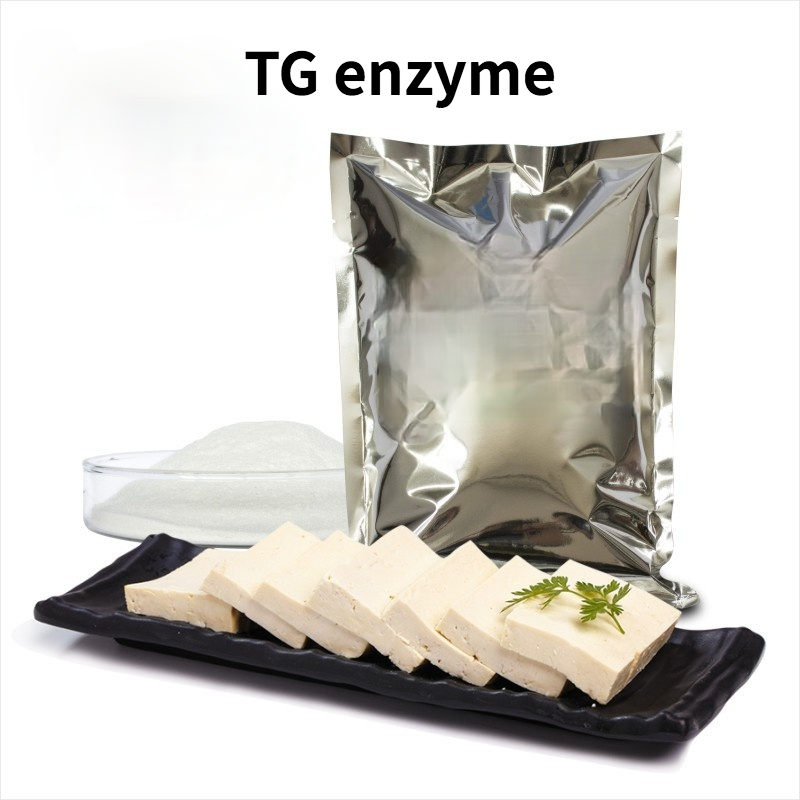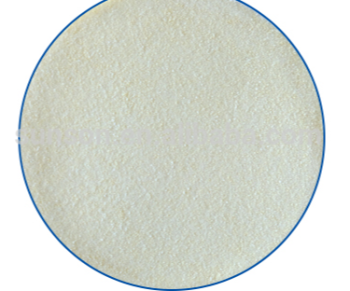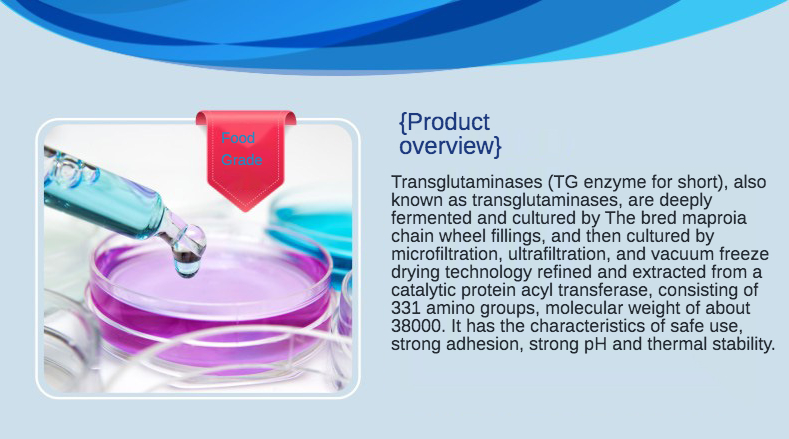
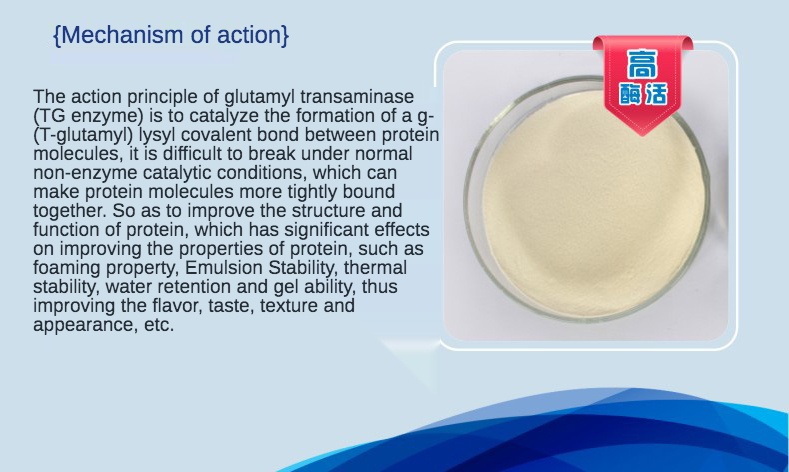
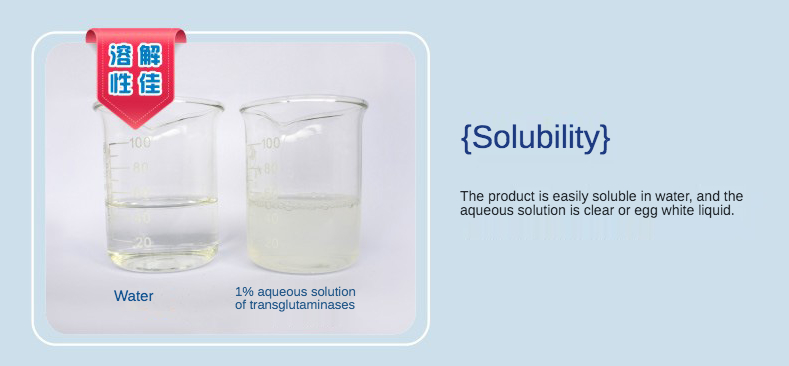
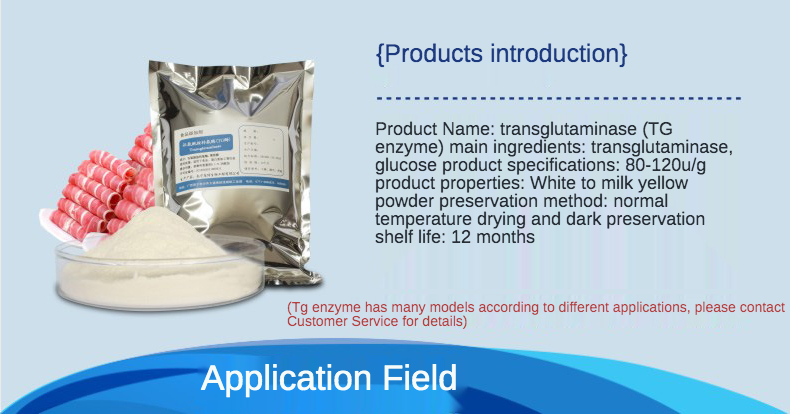
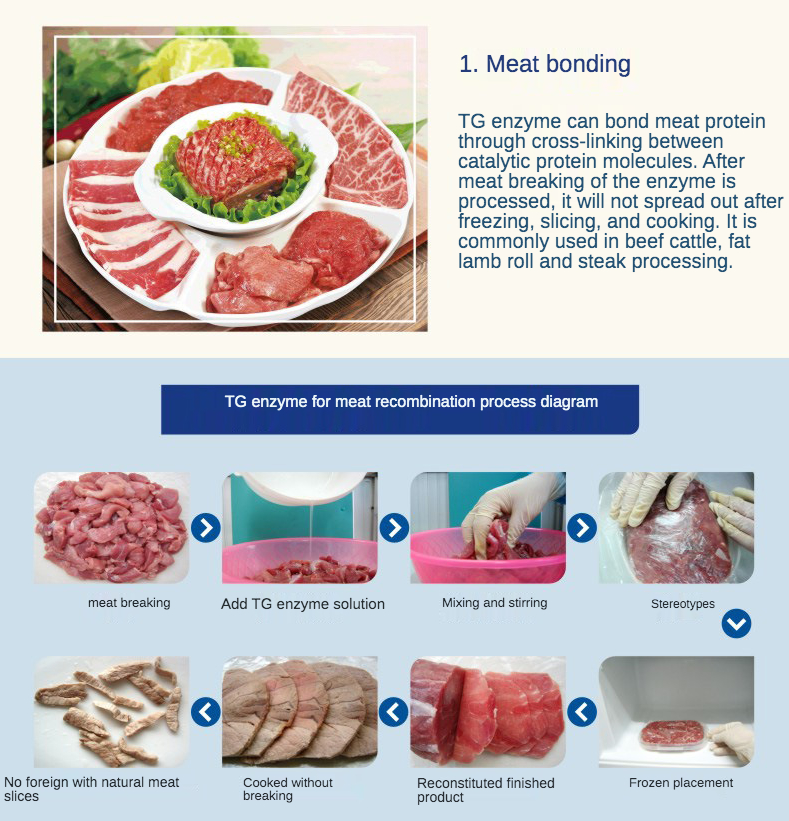
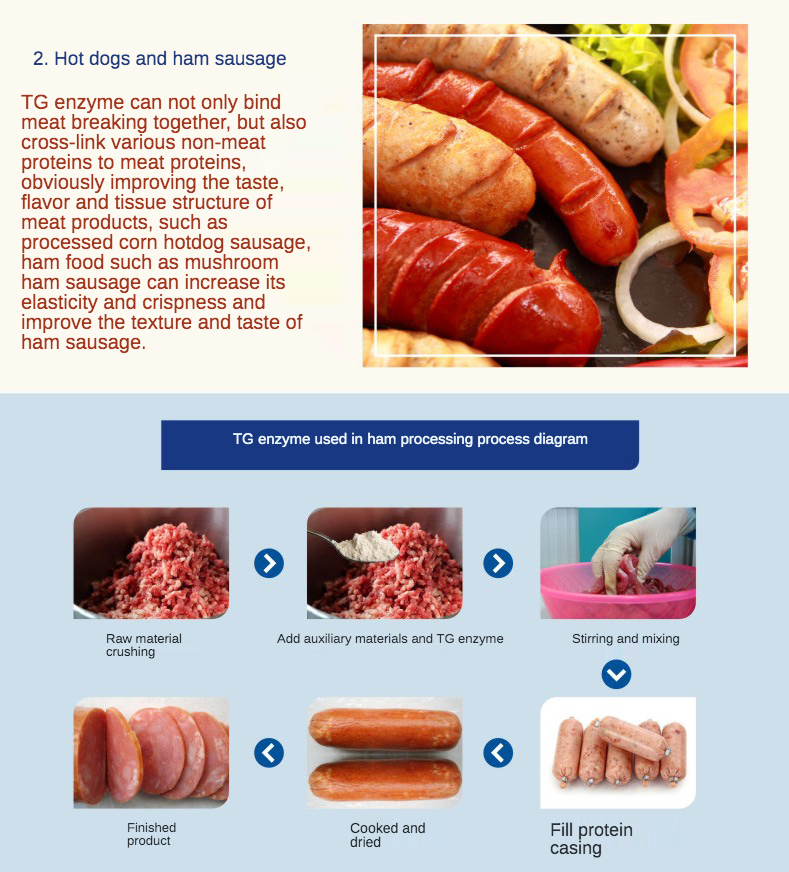
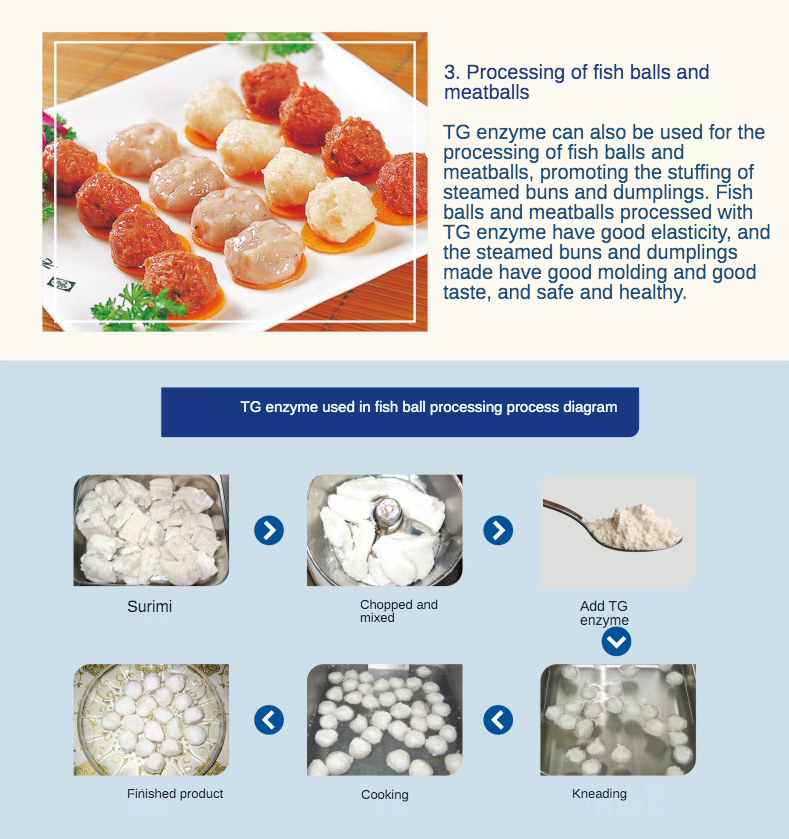
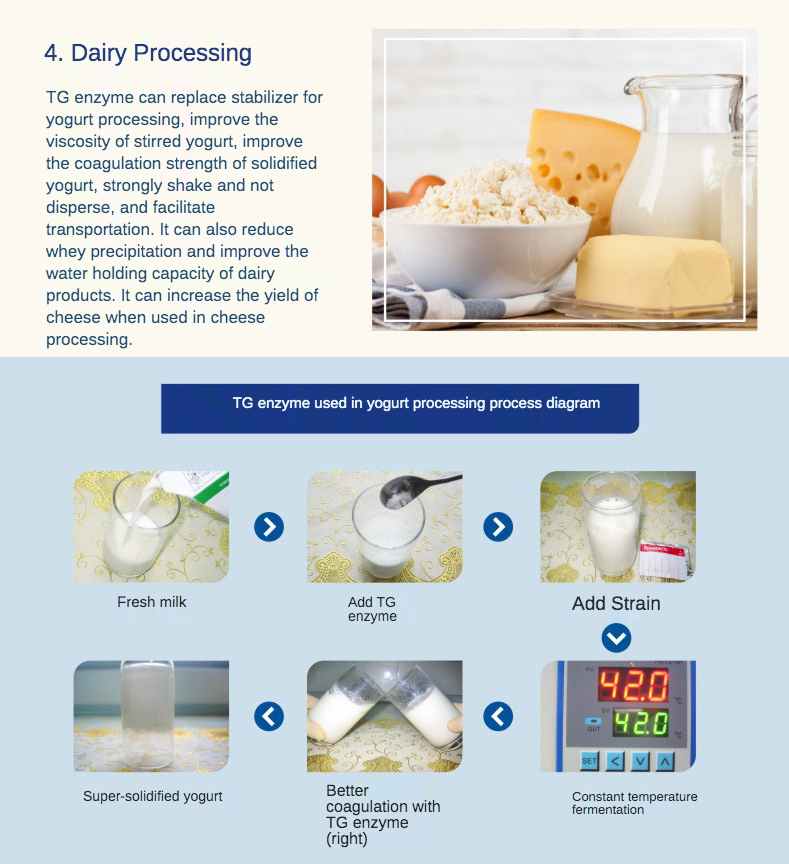
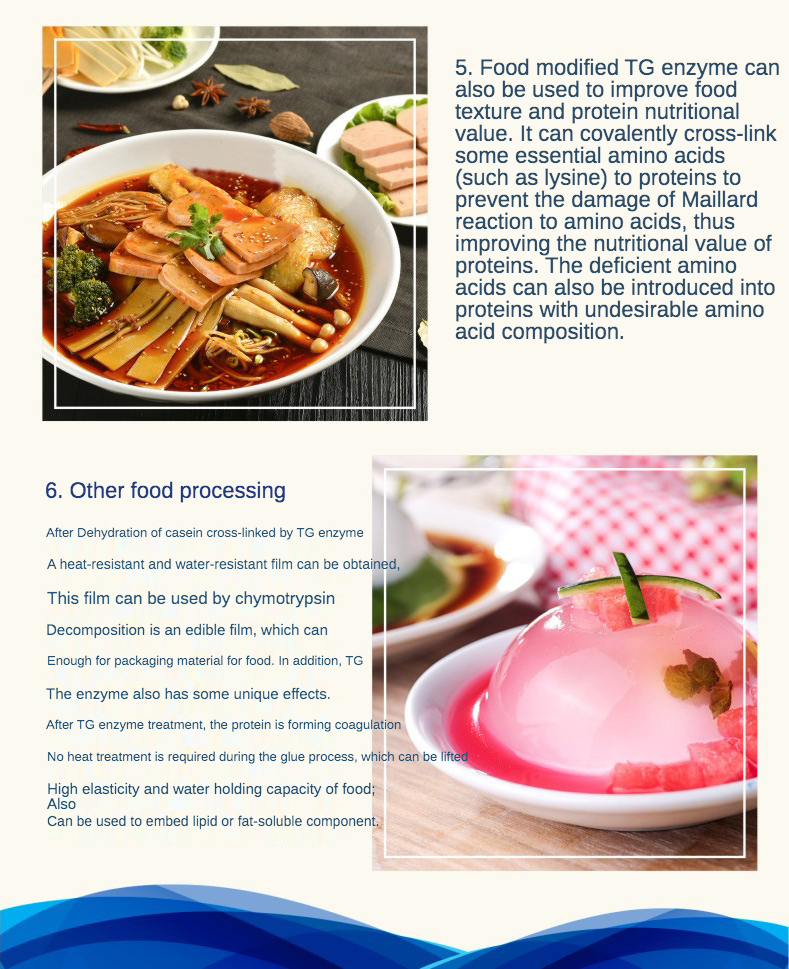
Glutamine Transglutaminase (TGase)
Glutamine transglutaminase (TGase), also known as transglutaminase, is a catalytic protein acyltransferase consisting of 331 amino acids with a molecular weight of about 38,000. It is extracted from selected Streptomyces maurophyticus in deep fermentation culture, followed by microfiltration, ultrafiltration, and vacuum freeze-drying techniques.
Introduction
The action principle of glutamine transaminase (TG enzyme) is to catalyze the formation of ε-(r-glutamyl) lysyl covalent bonds between protein molecules. These bonds are difficult to break under general non-enzymatic catalytic conditions, making protein molecules more tightly bound together. This improves the structure and function of proteins, enhancing properties such as foaming, emulsification stability, thermal stability, water retention, and gelation ability. Ultimately, it improves the flavor, taste, texture, and appearance of food.
Characteristics
The product is easily soluble in water, and the aqueous solution is clarified or egg white colored liquid.
Product Standard
Product name: Glutamine Transglutaminase (TG enzyme)
Main components: Glutamine transglutaminase, glucose
Product specification: 80-120U/g
Product properties: White to milk yellow powder
Storage: Room temperature dry and protected from light
Shelf life: 12 months
(TG enzyme has various models according to different applications, please contact customer service for details)
Application
- Meat bonding: TG enzyme can catalyze the cross-linking between protein molecules to bond meat proteins. After using this enzyme to treat minced meat, it will not fall apart after freezing, slicing, and cooking. It is commonly used in the processing of fatty beef and lamb rolls and steaks.
- Hot dog and ham sausage: TG enzyme can bond ground meat together and cross-link various non-meat proteins to meat proteins. This improves the taste, flavor, and organization of meat products, such as corn dog sausage and mushroom ham sausage, enhancing elasticity, crispness, and texture.
- Processing of fish balls and meatballs: TG enzyme can be used in the processing of fish balls and meatballs to promote the filling of buns and dumplings. Meatballs processed with TG enzyme have good elasticity, and buns and dumplings are well-formed with excellent taste.
- Dairy products processing: TG enzyme can replace stabilizer for yogurt processing, improve the viscosity of stirred yogurt, enhance the coagulation strength of solidified yogurt, and facilitate transportation. It can also reduce whey precipitation and improve the water holding capacity of dairy products. In cheese processing, it increases the yield of cheese.
- Food improvement: TG enzyme can improve the texture of food and increase the nutritional value of protein. It covalently cross-links essential amino acids to proteins, preventing amino acid destruction by the Maillard reaction and enhancing protein nutritional value. It can also introduce lacking amino acids into proteins with unsatisfactory amino acid composition.
- Other food processing: After casein cross-linked by TGase is dehydrated, a heat-resistant and water-resistant film can be obtained. This film can be decomposed by pancreatic rennet and used as food packaging material. TG enzymes improve the elasticity and water-holding capacity of foods without requiring heat treatment during gel formation. They can also encapsulate lipids or fat-soluble substances.
